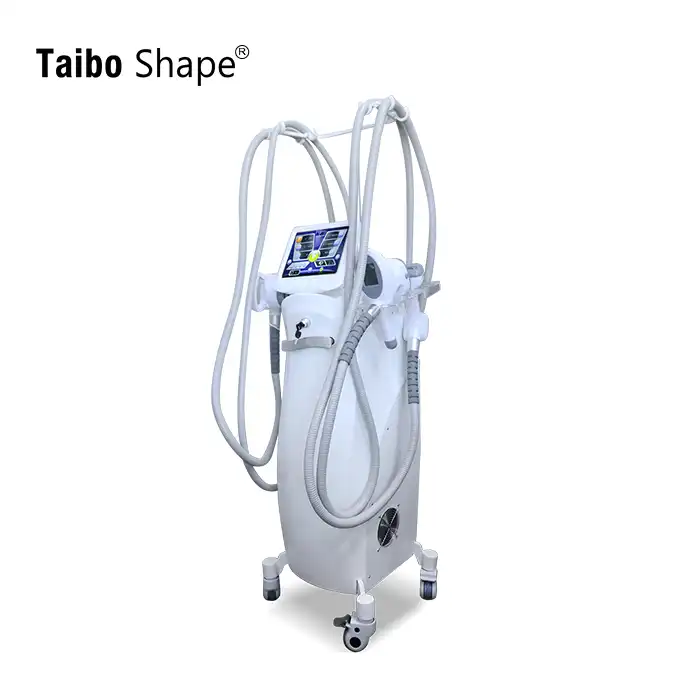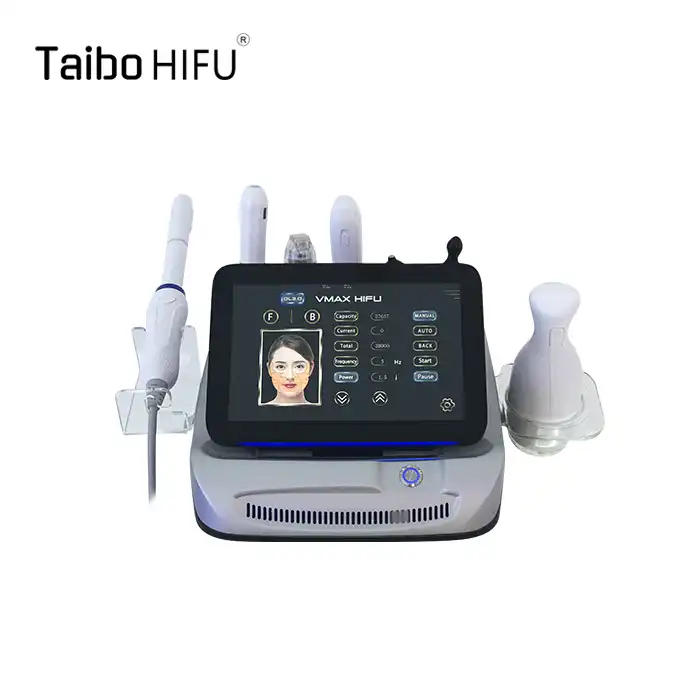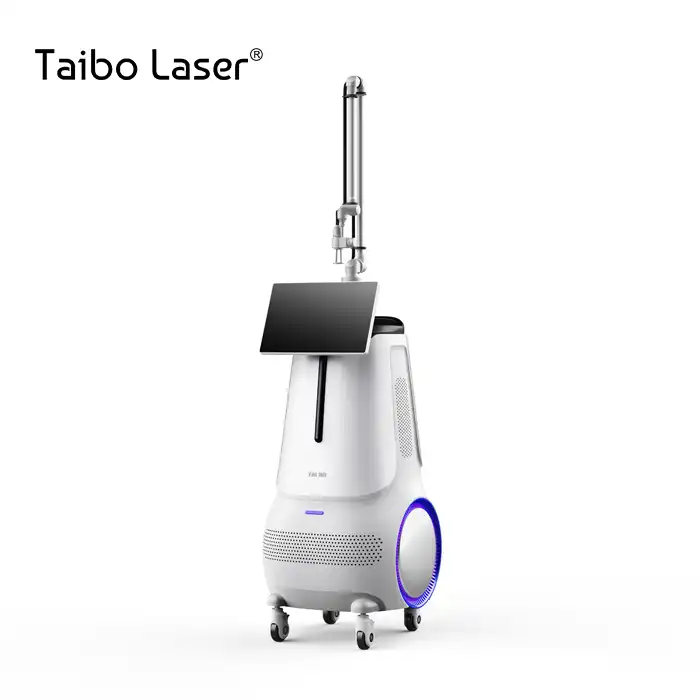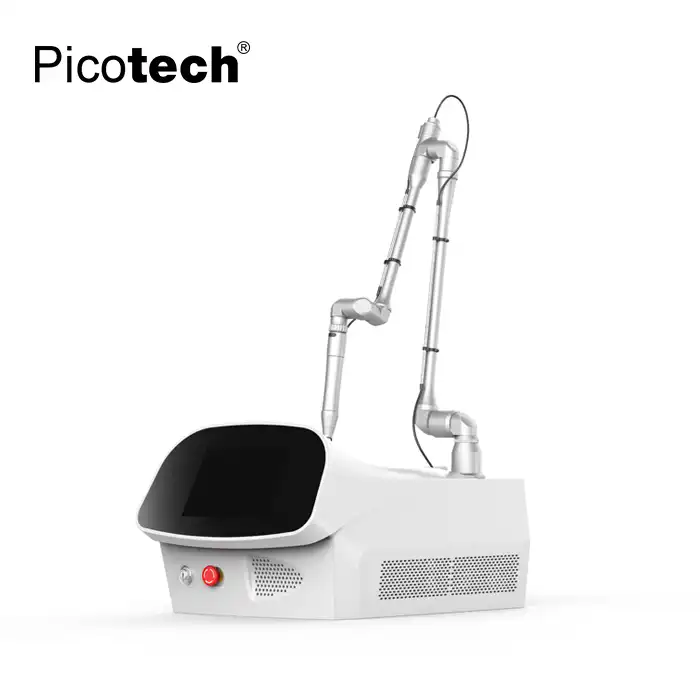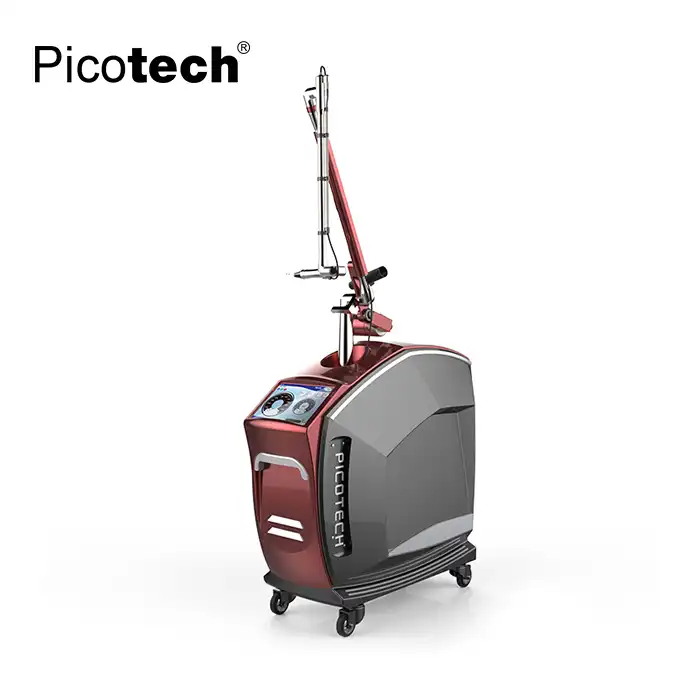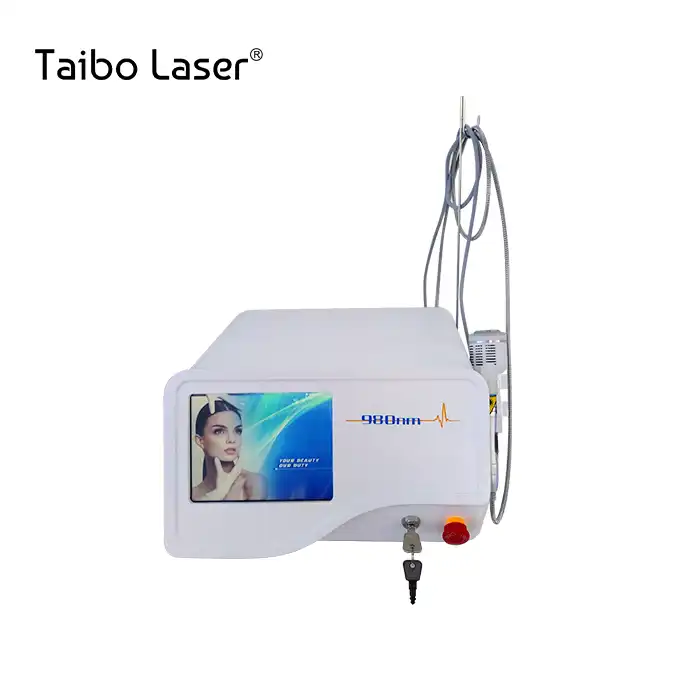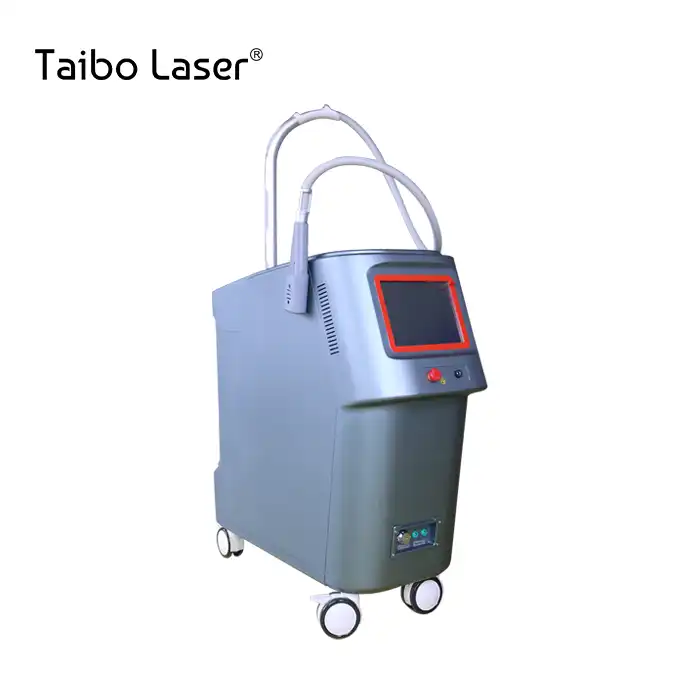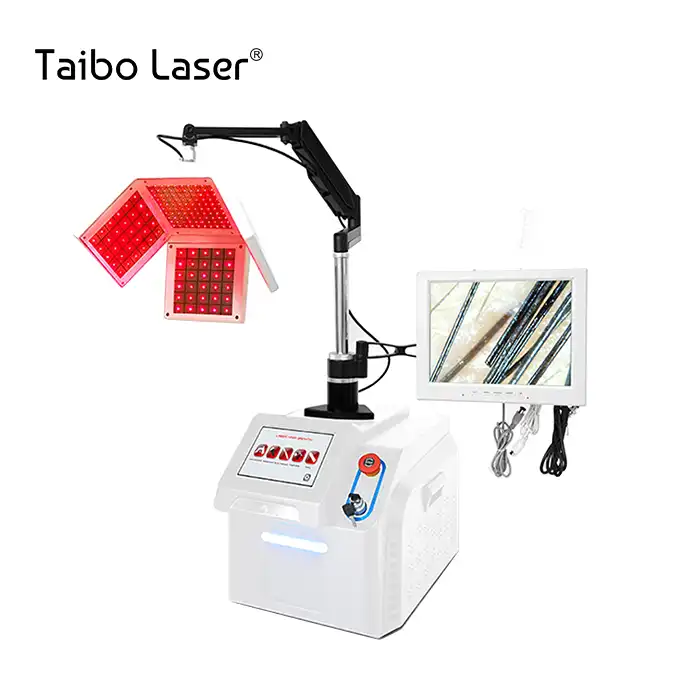
How to Maximize Results with Portable Q Switch YAG Laser?
2025-08-25 14:42:12
The portable q switch yag laser represents a revolutionary advancement in aesthetic medicine, offering practitioners unprecedented precision and versatility in treating various skin conditions. This cutting-edge technology combines the power of neodymium-doped yttrium aluminum garnet crystals with Q-switching mechanisms to deliver highly concentrated energy pulses, making it an indispensable tool for modern beauty clinics and dermatology practices. Understanding how to maximize the potential of your portable Q switch YAG laser is crucial for achieving optimal treatment outcomes while ensuring patient safety and satisfaction. With proper technique, appropriate settings, and comprehensive patient care protocols, practitioners can unlock the full therapeutic potential of this remarkable device, delivering exceptional results across a wide range of applications from tattoo removal to pigmentation treatment and skin rejuvenation.
Understanding the Technical Excellence of Portable Q Switch YAG Laser
Advanced Wavelength Technology and Energy Delivery Systems
The portable Q switch YAG laser operates on the principle of selective photothermolysis, utilizing specific wavelengths that target chromophores in the skin with remarkable precision. Modern systems typically feature dual or triple wavelength capabilities, with 1064nm for deeper penetration and darker pigments, 532nm for superficial lesions and red pigments, and some models incorporating 755nm for enhanced versatility. The Q-switching mechanism compresses enormous amounts of energy into nanosecond pulses, creating photoacoustic effects that shatter target structures without causing significant thermal damage to surrounding tissues. This sophisticated energy delivery system allows the portable Q switch YAG laser to achieve energy densities of up to 2000mj/cm2, providing sufficient power to break down even the most stubborn tattoo inks and deep pigmentation. The precision of these energy pulses, combined with adjustable spot sizes ranging from 1-6mm, enables practitioners to customize treatments according to the specific characteristics of each lesion or tattoo, ensuring optimal energy distribution and maximum therapeutic effectiveness.
Cooling Systems and Safety Mechanisms
The integration of advanced cooling systems in portable Q switch YAG laser units represents a critical component for both device longevity and patient comfort. Modern systems employ dual cooling mechanisms, combining air-cooled and water-cooled systems to maintain optimal operating temperatures during extended treatment sessions. The water cooling system utilizes imported German water pumps that operate silently while providing large water flow volumes for superior heat dissipation, thereby prolonging both laser and machine lifespan significantly. Safety features include automatic water flow monitoring with audible alarms that activate when water levels are insufficient, immediately shutting down the system to prevent overheating damage. The portable Q switch YAG laser incorporates multiple layers of safety controls, including emergency stop mechanisms, skin contact sensors, and automatic calibration systems that ensure consistent energy output throughout treatment sessions. These sophisticated safety measures not only protect the equipment but also minimize risks to both practitioners and patients, creating a secure treatment environment that builds confidence and trust.

User Interface and Operational Efficiency
The user-friendly interface of modern portable Q switch YAG laser systems features intuitive touchscreen controls that streamline the treatment process while maintaining precision and safety. The 10.4-inch display provides clear visualization of all operational parameters, allowing practitioners to monitor energy settings, pulse frequency, and treatment progress in real-time. The interface design incorporates preset treatment protocols for common applications while maintaining the flexibility to create custom settings for unique cases. Advanced models feature adjustable infrared targeting systems with handles that allow practitioners to modify focal length during treatment, ensuring accurate energy delivery to target areas. The portable Q switch YAG laser's operational efficiency is further enhanced by quick start-up times, minimal warm-up requirements, and consistent energy output that maintains stability throughout extended treatment sessions. This combination of user-friendly design and operational reliability enables practitioners to focus on patient care while maximizing treatment throughput and clinical outcomes.
Optimizing Treatment Protocols for Maximum Effectiveness
Patient Assessment and Treatment Planning Strategies
Successful outcomes with portable Q switch YAG laser treatments begin with comprehensive patient assessment and individualized treatment planning. Practitioners must evaluate skin type, pigmentation characteristics, tattoo composition, and medical history to determine optimal treatment parameters and realistic expectations. The Fitzpatrick skin type classification system serves as a fundamental guide for energy selection, with darker skin types requiring more conservative settings to minimize hypopigmentation risks. For tattoo removal applications, the portable Q switch YAG laser's effectiveness varies significantly based on ink colors, depth, age, and amateur versus professional application techniques. Black and dark blue inks respond exceptionally well to 1064nm wavelengths, while red and orange pigments require 532nm treatment protocols. Assessment should also consider the patient's healing capacity, lifestyle factors, and treatment goals to establish realistic timelines and session intervals. Documentation of baseline conditions through standardized photography and detailed treatment records enables practitioners to track progress and adjust protocols as needed, ensuring consistent advancement toward desired outcomes.
Energy Settings and Pulse Optimization Techniques
Maximizing results with portable Q switch YAG laser requires mastery of energy settings and pulse optimization techniques tailored to specific treatment objectives and patient characteristics. Initial treatments should begin with conservative energy levels, typically starting at 50-70% of maximum output and gradually increasing based on tissue response and patient tolerance. The relationship between energy density, spot size, and pulse frequency creates complex interactions that experienced practitioners learn to manipulate for optimal results. Larger spot sizes distribute energy more evenly but may require higher total energy to achieve therapeutic thresholds, while smaller spots provide greater precision but risk creating uneven treatment patterns. The portable Q switch YAG laser's adjustable frequency settings from 1-10Hz allow practitioners to control treatment speed and cumulative energy delivery, with lower frequencies often providing better results for stubborn pigmentation but requiring longer session times. Advanced techniques include pulse stacking for resistant lesions, where multiple pulses are delivered to the same area with brief intervals, and gradient energy delivery that varies power across treatment zones to accommodate irregular pigmentation patterns.
Post-Treatment Care and Session Spacing Protocols
Optimal results with portable Q switch YAG laser treatments depend heavily on appropriate post-treatment care protocols and strategic session spacing that allows for natural healing processes. Immediately following treatment, patients should receive detailed aftercare instructions that emphasize wound protection, sun avoidance, and recognition of normal versus concerning healing responses. The photoacoustic effects generated by the portable Q switch YAG laser create microscopic debris that requires time for macrophage clearance, typically requiring 6-8 weeks between sessions for tattoo removal and 4-6 weeks for pigmentation treatments. During this interval, practitioners should monitor healing progress and adjust subsequent treatment parameters based on tissue response and clearance patterns. Proper hydration, gentle cleansing routines, and broad-spectrum sun protection are essential components of post-treatment care that significantly impact final outcomes. Advanced protocols may include the use of topical treatments that enhance healing and reduce inflammation, though practitioners must carefully evaluate potential interactions with laser-treated tissue. Regular follow-up appointments enable practitioners to document progress, address patient concerns, and optimize treatment schedules for maximum effectiveness while minimizing adverse effects.
Professional Implementation and Business Success Strategies
Clinical Integration and Staff Training Requirements
Successful integration of portable Q switch YAG laser technology into clinical practice requires comprehensive staff training and standardized operational procedures that ensure consistent, safe, and effective treatments. Training programs should encompass laser physics fundamentals, skin biology, safety protocols, and hands-on operational experience under experienced supervision. Staff members operating the portable Q switch YAG laser must understand the relationship between wavelength selection, energy parameters, and treatment outcomes across various skin types and conditions. Regular competency assessments and continuing education ensure that practitioners maintain current knowledge of best practices and emerging techniques. Documentation protocols must be established to track treatment parameters, patient responses, and outcomes data that support quality improvement initiatives and regulatory compliance. The portable Q switch YAG laser's advanced safety features require staff understanding of proper maintenance procedures, troubleshooting techniques, and emergency protocols. Investment in comprehensive training programs ultimately enhances treatment quality, reduces liability risks, and improves patient satisfaction scores that drive practice growth and reputation.
Equipment Maintenance and Performance Optimization
Maximizing the longevity and performance of portable Q switch YAG laser systems requires adherence to manufacturer-specified maintenance protocols and proactive equipment care practices. Daily maintenance routines should include visual inspection of optical components, verification of cooling system function, and cleaning of external surfaces according to established procedures. The water cooling system requires regular monitoring of fluid levels, filtration system replacement, and periodic pump maintenance to ensure optimal heat dissipation and prevent equipment damage. Calibration procedures should be performed according to manufacturer specifications, typically requiring professional service at predetermined intervals or energy output thresholds. The portable Q switch YAG laser's optical components are particularly sensitive to contamination and physical damage, requiring careful handling and appropriate storage conditions when not in use. Preventive maintenance programs that include professional inspections, component replacement schedules, and performance verification testing help maintain optimal energy output and treatment consistency. Proper maintenance not only extends equipment lifespan but also ensures consistent treatment results that build patient confidence and practice reputation.
Patient Communication and Expectation Management
Effective communication strategies and realistic expectation management are crucial components of successful portable Q switch YAG laser treatments that maximize patient satisfaction and clinical outcomes. Initial consultations should provide comprehensive information about the treatment process, expected timeline, potential side effects, and factors that may influence results. Visual aids, including before-and-after photographs of similar cases, help patients understand realistic outcomes and appreciate the gradual nature of improvement. The portable Q switch YAG laser's effectiveness varies significantly based on individual factors, requiring honest discussions about variables that may impact treatment success. Practitioners should explain the scientific basis for treatment recommendations, helping patients understand why specific protocols are selected for their unique circumstances. Regular progress evaluations with standardized photography documentation allow patients to visualize improvements that may be subtle from day to day. Clear communication about post-treatment expectations, including normal healing responses and temporary side effects, reduces anxiety and improves compliance with aftercare instructions. Successful practices establish communication protocols that maintain regular contact with patients throughout the treatment process, addressing concerns promptly and adjusting expectations based on observed responses.
Conclusion
Maximizing results with portable Q switch YAG laser technology requires a comprehensive approach that combines technical expertise, individualized treatment protocols, and professional implementation strategies. The advanced capabilities of modern systems, featuring precise wavelength delivery, sophisticated safety mechanisms, and user-friendly interfaces, provide practitioners with powerful tools for achieving exceptional outcomes across diverse applications. Success depends on thorough patient assessment, optimized energy settings, appropriate session spacing, and comprehensive aftercare protocols that support natural healing processes. Professional integration requires investment in staff training, equipment maintenance, and effective patient communication strategies that build trust and manage expectations realistically. As a leading portable q switch yag laser factory, Xi'an Taibo Laser Beauty Company combines over 15 years of manufacturing expertise with cutting-edge technology to serve portable q switch yag laser suppliers and portable q switch yag laser manufacturers worldwide. Our China portable q switch yag laser systems represent the pinnacle of engineering excellence, offering portable q switch yag laser for sale with competitive portable q switch yag laser price structures that make advanced technology accessible to practices of all sizes. For detailed specifications, pricing information, or technical support, contact our expert team at susan@taibobeauty.com to discover how our solutions can enhance your practice capabilities and patient outcomes.
References
1. Anderson, R.R., Parrish, J.A. (1983). Selective photothermolysis: precise microsurgery by selective absorption of pulsed radiation. Science, 220(4596), 524-527.
2. Taylor, C.R., Gange, R.W., Dover, J.S., Flotte, T.J., Gonzalez, E., Michaud, N., Anderson, R.R. (1990). Treatment of tattoos by Q-switched ruby laser: a dose-response study. Archives of Dermatology, 126(7), 893-899.
3. Kilmer, S.L., Lee, M.S., Grevelink, J.M., Flotte, T.J., Anderson, R.R. (1997). The Q-switched Nd:YAG laser effectively treats tattoos: a controlled, dose-response study. Archives of Dermatology, 133(12), 1512-1519.
4. Bernstein, E.F., Schomacker, K.T., Basilavecchio, L.D., Plugis, J.M., Bhawalkar, J.D. (1998). Treatment of spider leg veins with a high-energy, long-pulse, frequency-doubled neodymium:YAG laser (532 nm). Dermatologic Surgery, 24(1), 19-23.
YOU MAY LIKE













